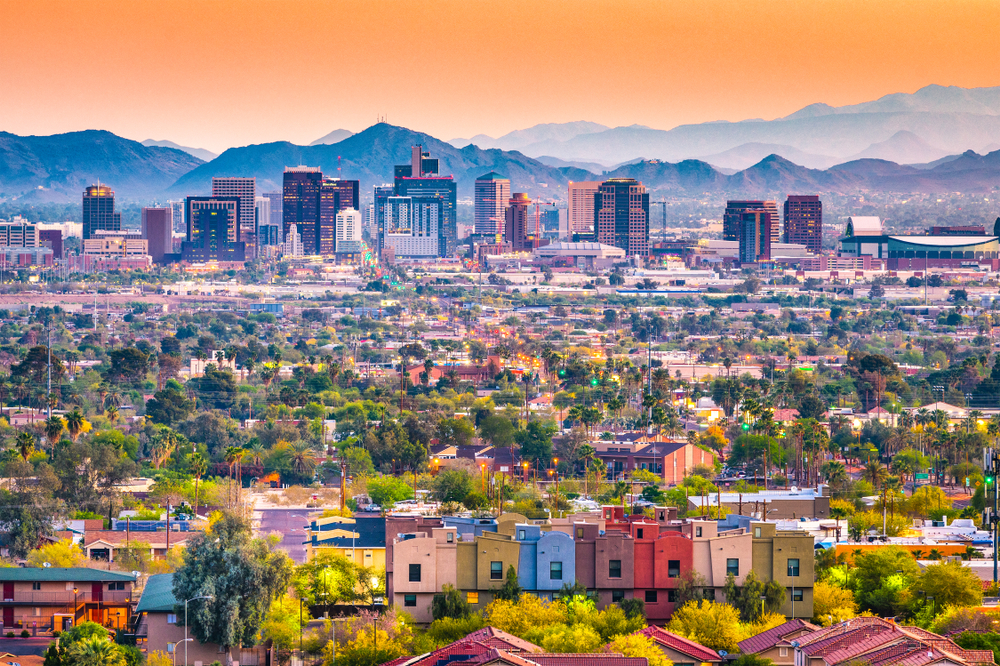Metro Phoenix is no stranger to growth. For decades, it has been a magnet for those chasing the sun, seeking opportunity, or simply looking for more space. But in 2025, that growth story is entering a new chapter—one defined not just by population gains, but by transformative corporate investments that are reshaping neighborhoods from the Southeast Valley to the far reaches of the West Valley. These investments are not just changing the landscape, but also the very fabric of the city. To understand where the housing market is headed, it’s worth looking back and looking at how these forces intersect to redefine what it means to live and work in the Valley.
The Draw of the Desert: Who’s Moving Here, and Why It Matters
Phoenix, the fifth-largest U.S. city, continues to grow, adding nearly 17,000 people between July 2023 and July 2024. This growth is not just a statistic, but a reflection of the city’s unique selling points: affordability compared to coastal cities, year-round sunshine, and a diverse economy. The broader Metro Phoenix area welcomed almost 85,000 new residents in 2024, many from international markets. If current trends continue, the region could reach over 7.6 million residents by 2055.
With the influx of new residents, the demand for housing is high, from apartments near light rail to single-family homes on the city’s outskirts. However, this housing growth is not happening in isolation. It’s strategically aligned with job opportunities, infrastructure development, and a shifting economic landscape.
A Valley Transformed: Where Companies Are Betting Big
Nowhere is this transformation more evident than in North Phoenix, where Taiwan Semiconductor Manufacturing Company (TSMC) is anchoring an industrial revolution. With three chip fabrication plants and a workforce set to double by the end of the decade, TSMC is catalyzing what could become one of the most critical employment zones in the western United States. Surrounding this facility, the $7 billion Halo Vista project plans to build a full-scale community with homes, retail, hospitality, and even schools.
Yet the story isn’t limited to one corner of the city. The Southeast Valley, long known for its master-planned communities and retail centers, is seeing a second wave of economic investment. In one example, “The District Downtown” is breathing new life into a 45-acre stretch with office space, retail, a hotel, and nearly 800 apartment units. Whole Foods and Dick’s House of Sport are anchoring new development at SanTan Village, while the $300 million Heritage Park is transforming downtown Gilbert into a true mixed-use destination. And as demand continues, projects like Modera Gabriella Pointe are pushing forward to add even more density and vibrancy to the area.
Meanwhile, Buckeye and Tolleson are stepping into the industrial spotlight in the West Valley. Logistics and distribution centers like the I-10 Gateway—where Kenco recently signed a lease for over 640,000 square feet—are attracting interest from national tenants. Verrado Marketplace, a 500,000-square-foot power retail center, is under construction to support the region’s residential boom. Even smaller-scale projects, like Park 91’s dual-building complex, prove that industrial demand isn’t just about size—it’s about location, workforce, and timing.
This means one thing for the real estate market: we are building cities within the city.
Real Estate Trends: What the Numbers Reveal
Home prices in Phoenix continue to tick upward, reaching a median of $457,998 as of April 2025—a 3.1% annual gain. Nationally, the housing market is tempering, but Metro Phoenix remains an outlier, largely thanks to its expanding employment base and steady stream of new residents.
Realtor.com recently ranked Phoenix as the eighth top housing market in the country, highlighting its potential for sales activity and price appreciation. But where the growth happens is just as important as how fast. The Southeast Valley, West Valley, and North Phoenix stand out as future growth nodes—each tied to new corporate anchors, emerging transit corridors, or lifestyle-driven demand.
Growing Pains: The Challenges Behind the Boom
Still, this level of expansion comes with real challenges. TSMC and other advanced manufacturers are raising questions about workforce availability, prompting partnerships with local colleges and the rollout of apprenticeship programs. In retail, an evolving economy has left some big-box spaces behind, calling for cities to reimagine zoning and repurpose vacant space. And then there’s the ever-present question of water: with growth comes pressure on infrastructure, and long-term sustainability is front and center in development planning.
The Road Ahead
Looking ahead to the next decade, Metro Phoenix is on the brink of its next transformation. This isn’t just about building homes—it’s about creating interconnected ecosystems. It’s about understanding how job centers, entertainment districts, transportation infrastructure, and housing all fit together. Those who grasp this interconnectedness, from developers to city leaders to investors, will be the ones who shape the next phase of the Valley’s growth.
The coming years are full of potential for buyers and sellers alike, with promising opportunities on the horizon. If you know where to look, you can be part of the exciting growth that Metro Phoenix is about to experience.






